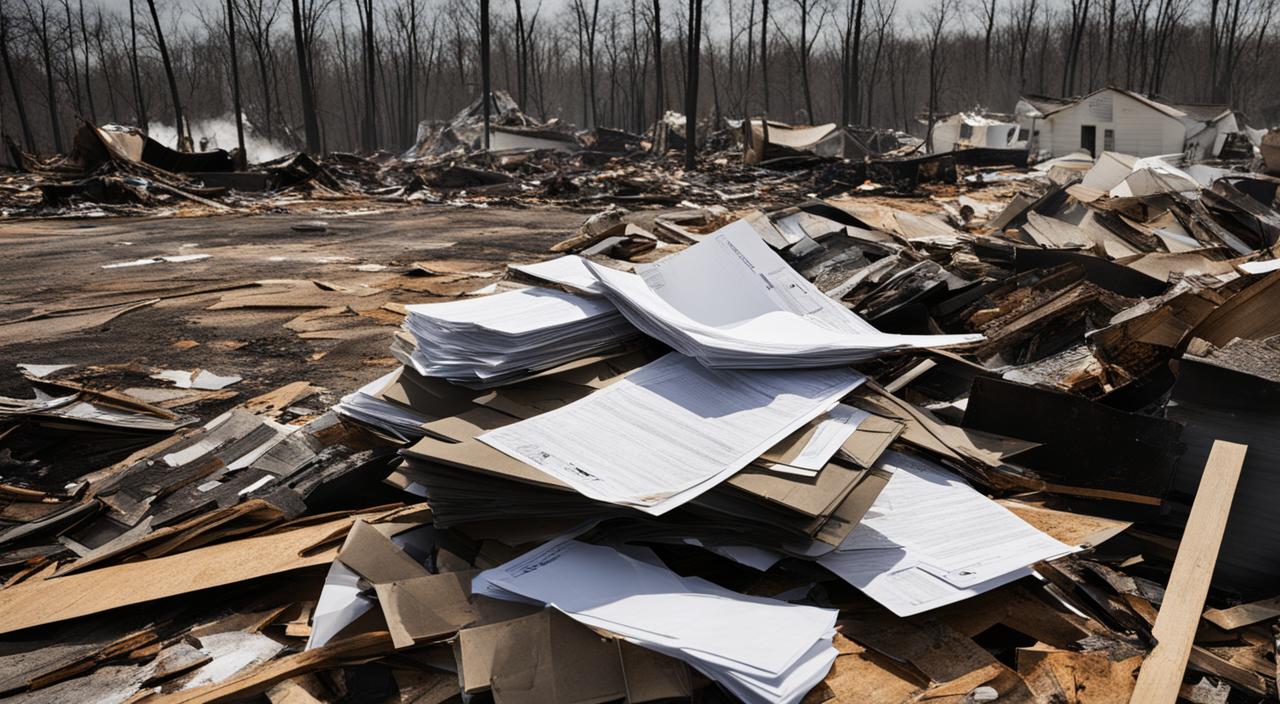
Dealing with the aftermath of a house fire can be devastating, both emotionally and financially.
However, there are financial assistance programs available to help individuals and households recover from such a disaster. In this article, we will explore the various avenues of financial aid, with a focus on FEMA assistance, for those affected by a house fire.
Whether your home has been damaged or destroyed, financial relief is within reach.
President Joseph R. Biden has approved grants for temporary housing, home repairs, low-cost loans, and other programs specifically designed to assist individuals and business owners in five New Mexico counties affected by wildfires and straight-line winds: Colfax, Lincoln, Mora, San Miguel, and Valencia.
If your primary residence is no longer safe, sanitary, or livable due to the fire, FEMA offers assistance. They encourage both uninsured individuals and those with insurance to apply for aid. FEMA provides financial help to cover expenses that were not covered by homeowners or flood insurance.
Additionally, the Small Business Administration (SBA) offers low-interest disaster loans to businesses, nonprofit organizations, homeowners, and renters affected by declared disasters. These loans can be used to repair or replace your primary residence or replace personal property.
To make the application process easier, FEMA encourages residents of New Mexico to create an online account for communication and document submission. The FEMA app is also available for download, providing convenient access to important resources and updates.
How to Apply for Financial Assistance
To apply for financial assistance after a house fire, some specific steps and processes need to be followed.
Whether you’re seeking assistance from FEMA or applying for an SBA loan, it’s important to navigate the application process correctly to maximize your chances of receiving the support you need.
FEMA Registration
To apply for FEMA assistance, you can call the FEMA Helpline or visit the disasterassistance.gov website. During the registration process, you will need to provide personal information such as your Social Security number, annual household income, contact information, insurance details, and bank account information.
It is crucial to accurately provide all the necessary information to ensure a smooth application process.
FEMA also recommends creating an online account, which allows for easier document submission and application status tracking.
This can be done by verifying your identity and setting up a user ID and password. The online account also provides a Upload Center where you can submit important documents related to your application.
If you encounter any issues while creating or accessing your online account, you can reach out to the FEMA Help Desk for assistance. However, for specific information about your application or any other concerns, it is best to contact the FEMA Helpline for guidance.
SBA Loan Application
If you have been referred to the Small Business Administration (SBA) for a disaster loan, you must complete an SBA loan application. This can be done on the SBA website or at a Disaster Recovery Center. The application process involves providing relevant information about yourself, your property, and the damages incurred.
It is important to accurately complete the application and include any necessary supporting documents to support your request for financial assistance.

By following the proper application procedures for FEMA assistance and SBA loans, you can increase your chances of receiving the financial support needed to recover from a house fire.
Remember to provide accurate information, make use of available online resources, and reach out to the respective helplines for any assistance or guidance throughout the process.
Help Available for Individuals and Households
FEMA offers a range of financial assistance programs to support individuals and households affected by disasters. Through their Individuals and Households Program (IHP), FEMA provides direct services and financial aid to eligible individuals and households.
This program covers necessary expenses and serious needs that are not covered by insurance or are underinsured.
FEMA also partners with the Small Business Administration (SBA) to offer low-interest disaster loans to homeowners and renters in declared disaster areas. These loans help cover the cost of repairing damage or replacing items to prevent future damage.
It’s important to note that individuals do not need to own a business to apply for these loans.
To assist individuals in navigating FEMA’s assistance programs, resources such as the Road to Recovery interactive tool and “Help After a Disaster” brochures translated into multiple languages are available.
Additionally, FEMA provides an Individual Assistance Resource Library with valuable information about the various assistance programs.
For more information and to access these resources, individuals can visit FEMA’s official website. It’s important for those affected by disasters to be aware of the assistance programs and support available to help them recover and rebuild their lives.
Fire Prevention and Recovery Tips
When it comes to fire safety, prevention is key. Taking proactive measures to prevent fires in your home can help keep you and your loved ones safe. Additionally, having a well-designed fire escape plan is essential in case of an emergency. Here are some tips to help you prevent fires and recover in the event of a fire.
Preventing Fires
There are several steps you can take to prevent fires in your home. Firstly, make sure to regularly inspect and maintain your electrical wiring and appliances to prevent any potential electrical issues. Installing smoke detectors on every level of your home and checking their batteries regularly is crucial to ensure early fire detection.
Furthermore, never leave candles or cooking appliances unattended, and keep flammable objects away from heat sources.
Creating a Fire Escape Plan
Having a well-thought-out fire escape plan is essential for everyone in your household. Make sure that everyone knows multiple escape routes from each room and establish a designated meeting point outside of your home. Practice your fire escape plan regularly with your family so that everyone is familiar with the procedure.
If a fire occurs, remember to stay low to avoid smoke inhalation, test doorknobs for heat before opening them, and use a fire extinguisher if it is safe to do so.
Recovering from a Fire
In the unfortunate event of a fire, it is important to know how to handle the aftermath. Follow the guidance provided by FEMA to ensure your safety and well-being. Take necessary precautions when entering your home, such as wearing protective clothing and avoiding areas that may be structurally unsound.
Document the damage by taking photographs and making a detailed checklist of the items affected. Reach out to your insurance company to report the incident and start the claims process. Lastly, seek support from local resources and organizations to assist you in the recovery process.






